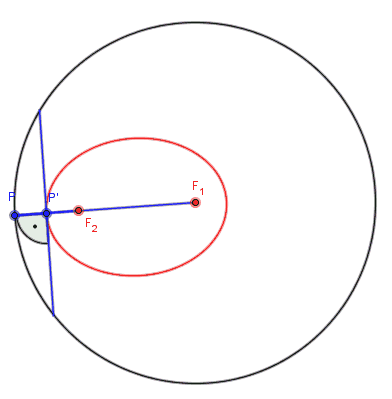Feynman's lost lecture: The movement of planets around the sun
Feynman's lost lecture is a book about a physics lecture given by Richard Feynman on the movement of planets around the sun .
Richard Feynman said he gave the lecture at issue on March 13, 1964 at the California Institute of Technology for the enjoyment of the students. It was no longer part of the examination material and had not found its way into the three-volume work “ Feynman Lectures on Physics ”. In 1992 the archivist Judith R. Goodstein was able to secure a tape recording and some sketches made by Feynman and then, together with her husband, the physicist David L. Goodstein, reconstruct this lecture, which was believed to be lost. This resulted in the book Feynman's Lost Lecture , published by WW Norton & Company in 1996 , which was translated into German by Anita and Jürgen Ehlers .
After a brief historical retrospective from Copernicus to Newton and some biographical remarks on Richard Feynman, Feynman's proof of the elliptical theorem, reconstructed by Goodstein and elaborated in detail, is presented. Finally, the lecture itself is reproduced in full. In the American edition, the audio document is also included on CD.
It is explained how Newton found the right law of distance to his law of gravitation on the basis of Kepler's third law and then, conversely, derived Kepler's laws on the basis of this law of gravitation and its mechanics . The most difficult part is the principle of ellipses, according to which the planets move on elliptical orbits around the sun. Feynman mentioned that Newton had also presented a purely geometric proof in the Philosophiae Naturalis Principia Mathematica , but had used arguments about conic sections that were not familiar to him (Feynman). He therefore completed the proof in his own way. Precisely this proof is at the center of the book. It is characterized by the fact that it is elementary in the sense that only lower secondary mathematics is used. However, the proof is said to be not easy.
Based on the definition of an ellipse as the set of all points that have a constant sum of distances from two given points, the so-called focal points ( gardener's construction ), it is deduced that a light beam emanating from one focal point is reflected by the ellipse line into the other focal point. This results in the following construction method of an ellipse from a given circle: In addition to the center of the circle , another point from the inside of the circle is identified as the focal point. For each point on the circular line, the image point is constructed as an intersection of the line and the perpendicular to the line . The set of all image points constructed in this way results in an ellipse. That is then later the decisive geometric fact in Feynman's argument, which deduces the elliptical shape of the orbit from a velocity diagram of the planetary motion. Feynman cites a work by U. Fano on Rutherford's scattering formula as the source of his proof idea ; the latter is also discussed in the final part of the lecture.
literature
- David L. Goodstein, Judith R. Goodstein: Feynman's Lost Lecture. The movement of the planets around the sun , Piper Verlag GmbH (1998), ISBN 3-492-03922-7
- David L. Goodstein, Judith R. Goodstein: Feynman's Lost Lecture. The Motion of Planets Around the Sun , WW Norton & Company (1996), ISBN 0-393-03918-8







